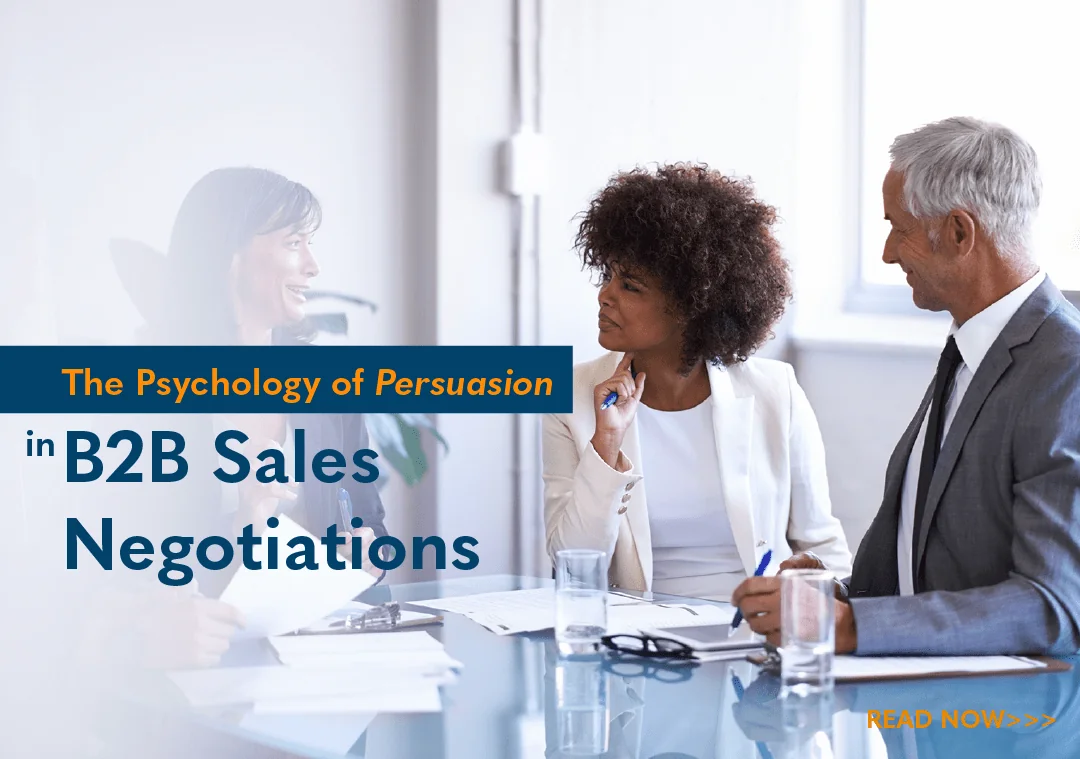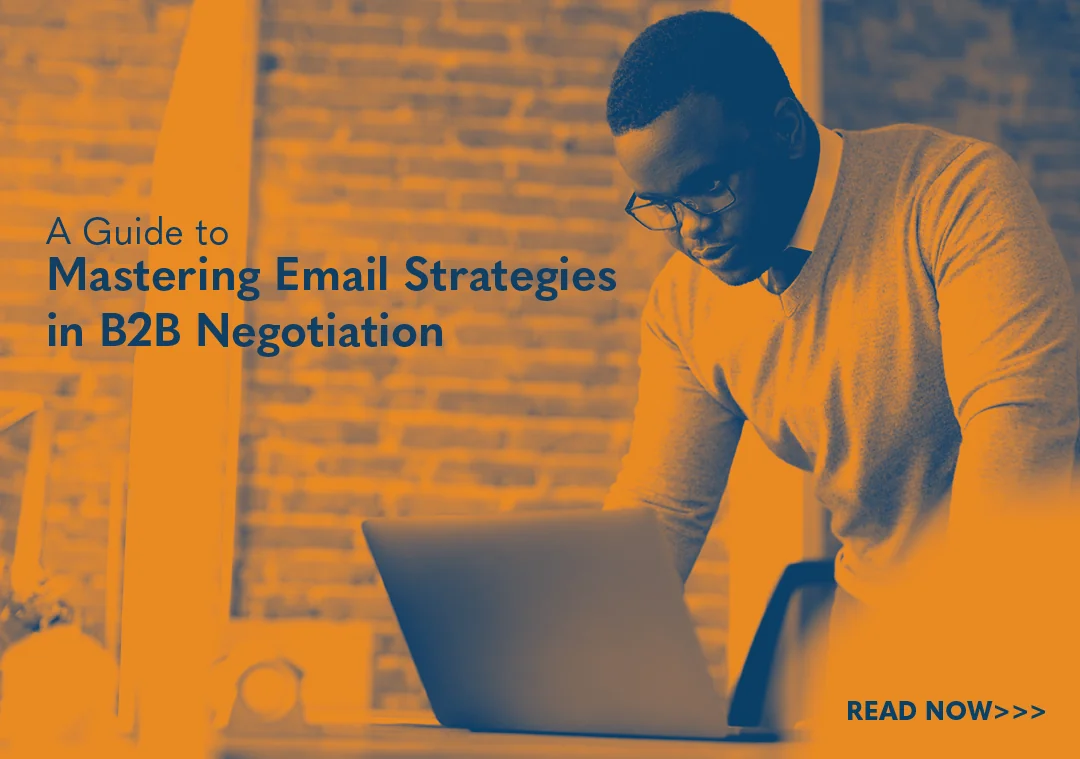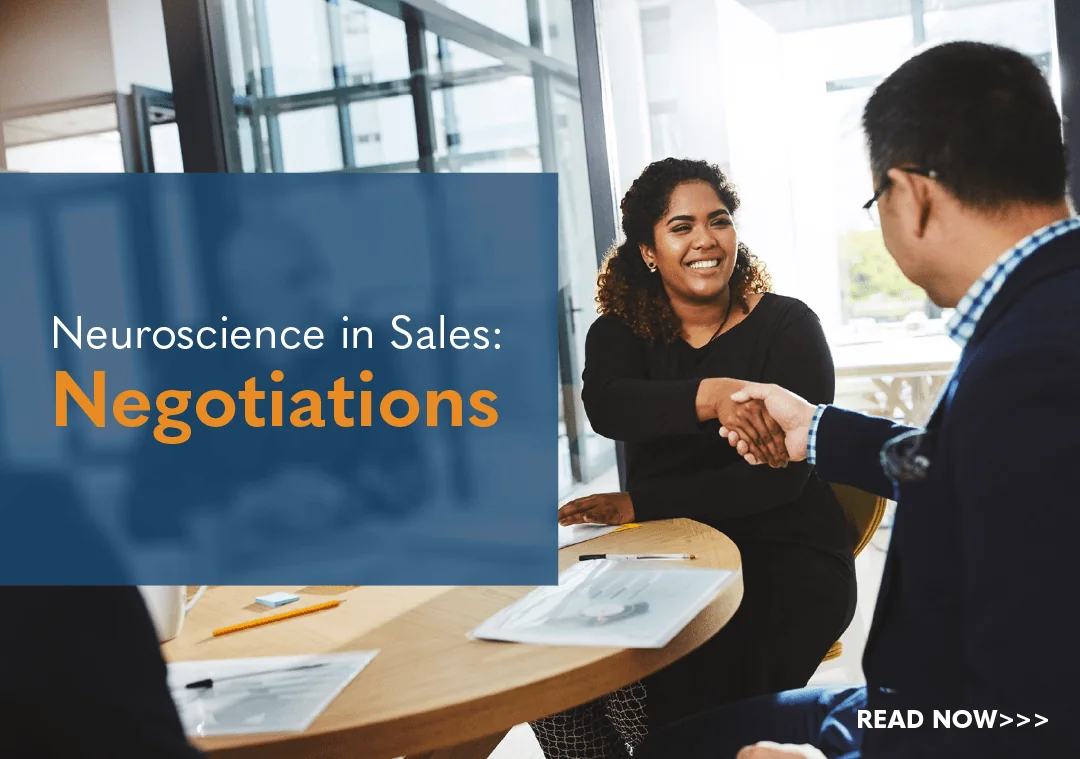The Psychology of Persuasion in B2B Sales Negotiations

Today’s sales negotiations are more complex than ever. With multiple decision makers, complicated processes, and higher stakes, they are multifaceted, intricate affairs. In this, the act of persuasion is as much an art as a science. Understanding the psychology of persuasion can elevate sales strategies, better tying them to customer motivations. This can strengthen relationships and result in more successful negotiations.
However, for many, the word persuasion is problematic. While essential to selling, it also comes with baggage, particularly related to negative sales stereotypes. Of course, much of this is a carryover from outdated adversarial negotiation tactics. But even in collaborative negotiations, there can be a fine line between persuasion and coercion or manipulation.
Here, we will explore the psychology behind persuasion in sales negotiations. And we will offer insights and tips on leveraging persuasion to help clients succeed.
Understanding Persuasion in B2B Sales
First, let’s address the elephant in the room. In modern selling, persuasion is not convincing customers to buy what they don’t need. While this may have once been acceptable in transactional sales, today, it would be extremely short sighted. Modern problems are too complex. They require significant investments that prove their value over time. And buyers will walk if they feel uneasy.
Thus, persuasion starts with fully understanding customer needs and aligning them with your products and services. And it demonstrates how your solutions improve their business and situation. But it’s not deceptive or exploitive. Rather, it provides the means to help them make their own informed choices.
In this, then, persuasion is enlisting buyers as partners and enabling them to help themselves. Of course, this is not always easy. And it requires a lengthy process built on establishing and maintaining trust.
The Role of Trust
The foundation of successful business relationships is trust. Without it, even the most persuasive pitches or attractive deals will seem suspicious. Plus, no one wants a partner they can’t trust. There’s too much at stake. But building trust takes time and is earned through:
- Credibility
- Consistency
- Transparency
On one level, credibility is a documented history of success. This is often shown in case studies and testimonials, covered below. But more importantly, it begins with a buyer’s initial interactions with your organization and how they feel. Further, it is demonstrated through a seller’s actions. By placing the buyer’s needs on par with or above their own, sellers show they are trustworthy.
This extends to openness about intentions, processes, and especially price, often a sticky point in negotiations.
Research cited by Virtual Expo shows 87% of B2B buyers check prices before contacting suppliers. And UpLead notes 86% of buyers want price transparency upfront. Thus, price transparency can be a main driver of trust.
Influence: The Psychology of Persuasion
In 1984, American psychologist Robert Cialdini published the book Influence: The Psychology of Persuasion. It has since become a seminal work for sales and marketing professionals, selling over five million copies. In it, Cialdini outlines six key principles of persuasion:
- Reciprocity
- Commitment and Consistency
- Social proof
- Authority
- Liking
- Scarcity
Now, let’s take a closer look at each and how it applies to sales negotiations.
Reciprocity: Reciprocity is the practice of exchanging with others for mutual benefit. It’s based on the principle that people feel obligated to return favors. While not necessarily quid pro quo, in societal norms, people often want to balance the scales. This includes sales negotiations where sellers can trade upfront gives for later gets.
Research in ScienceDirect shows a significant difference in how buyers and sellers view reciprocity. They note salespeople see it more socially and focus on gratitude. In contrast, buyers see it economically and are more tuned to indebtedness.
Typical forms of reciprocity can include:
- Small gifts: Everyone loves swag, such as promotional items and branded merchandise. These can include pens, mugs, t-shirts, anything with a company name or logo. Of course, most B2B buyers don’t make purchasing decisions based on free t-shirts. But small gifts can set the stage for reciprocity.
- Gestures: Positive actions are also effective. For example, consider how your counterparts might appreciate coffee and donuts. This extends to email or virtual negotiations where gift certificates can generate goodwill.
- Professional advice: In addition, professional advice also drives reciprocity. For example, instead of upselling, consider down-selling, like offering lower-priced alternatives. This can be especially helpful if your offer is unsolicited and outside the scope of your negotiation.
Commitment and Consistency: The principle of commitment and consistency suggests that, once committed to decisions, people often remain consistent. They want to see things through. Thus, in negotiations, securing early small commitments can pave the way for larger agreements. This includes:
- Praising wins
- Securing verbal commitments
- Inspiring confidence
In negotiations, the little things, like attending meetings or trialing products, often lead to greater commitment. Therefore, value and praise small victories.
In addition, secure and note verbal agreements. While not necessarily binding, these reinforce commitment and consistency to build momentum.
Inspiring your buyer’s confidence is an important aspect of persuasion. According to Gartner, confident B2B buyers are 3.6x more likely to complete high-quality deals.
Social Proof: Social proof is using the actions of others as a persuasive tool. In sales, it is leveraging your success with comparable companies in similar situations. In this, it is less about the seller’s persuasiveness and more the buyer convincing themselves to act. Once they see achievement in hard data, such as a 200% ROI, they want it for themselves. Effective forms of social proof include:
- Client lists: A list of reputable and well-known clients can serve as a powerful endorsement. When included on your website and in sales collateral, their names and brands stand for themselves.
- Case studies: These provide detailed accounts of your organization’s previous successes. Be sure to include specific data, such as ROI, to highlight benefits. According to the Content Marketing Institute, case studies are among the most effective forms of content and social proof. In addition, 72% of buyers say they are a key factor in purchasing decisions.
- Testimonials: Positive feedback is also effective. According to LinkedIn, 72% of customers say positive reviews and testimonials boost trust. In addition, 88% trust online reviews as much as personal recommendations.
Other forms can include partnerships and alliances, media coverage, industry awards, and user statistics (“Over 99 Billion Served”). In addition, online reviews, ratings, certifications, and credentials are also effective.
Authority: Often, we are persuaded by those we perceive as experts. Demonstrating authority can be achieved through:
- Thought leadership
- Certification and awards
- Professional associations or partnerships
Articles, blogs, and whitepapers position you as an authority in your field. In addition, professional participation, as in panel discussions, speeches, or webinars, display thought leadership.
Certifications and awards also demonstrate authority. This includes e-commerce badges on your website or social media.
Association with reputable organizations lends credibility. Therefore, highlight partnerships with other industry leaders in research and other sales-related activities.
Liking: In sales, likability can be trap. Far too many inexperienced sellers believe buyers must like them to ensure success. However, research in the Harvard Business Review is revealing. It found 89% of sellers with the best records said they did not need to be liked. Conversely, 86% of the weakest indicated they did.
Thus, there does not seem to be a direct correlation between likability and success in sales. However, in sales as in life, people are often persuaded by those they like. Building rapport and creating a connection can significantly influence negotiations. To increase likability:
- Ensure positive interactions
- Display genuine interest
- Find common ground
- Share stories
Never underestimate the power of positivity, respect, and friendliness to create favorable impressions.
Showing a genuine interest in the other party’s needs and concerns demonstrates empathy and builds rapport.
Having common interests or values can create camaraderie. According to Forrester research, buyers trust those they feel close to. This includes industry peers (90%) and vendors in their industry (85%).
Through stories, we share who we are, how we got here, and what we stand for. This is critical for buyers and sellers to form connections. Research cited by LinkedIn shows B2B buyers are 48% more likely to consider solutions with stories that showcase value. In addition, they note Stanford University research shows stories are 22 times more memorable than facts alone.
Scarcity: The fear of missing out (FOMO) can drive decision-making. After all, nobody wants to lose out on a great deal. For sellers, then, FOMO presents an opportunity to generate urgency. TrustPulse notes it can increase conversions up to 332%.
Of course, the deal must first be advantageous to the buyer. This includes solving their problems and alleviating their needs. But it must also inspire them to act, the sooner the better. Remember, persuasion is helping buyers help themselves. To be persuasive, scarcity should include:
- The consequences of inaction
- The benefits of action
- Limited-time discounts
Consequences should not be a fear tactic. This can backfire if perceived as manipulative. Instead, to inspire action, consequences must be considered in relation to benefits.
Limited-time discounts are a form of scarcity. As persuasion, these are most effective when buyers feel these are “in the moment,” based on current agreements. In addition, timing is critical, such as in later stages of negotiations.
Like reciprocity, exclusive deals should make buyers feel special. For example, they are receiving this offer because they are valued customers.
Conclusion
As you can see, persuasion in sales negotiation is not a gimmicky trick used to manipulate buyers. Instead, it’s considered psychological principles guiding buyers to recognize value and act. Used properly, by sellers with integrity, it helps buyers help themselves. We hope this helps your sales team leverage the psychology of persuasion to achieve more win-win outcomes.

- Account Planning (11)
- Awards (52)
- Client Testimonial (37)
- Personal Branding (19)
- Podcast (11)
- Research (70)
- Sales Career Development (85)
- Sales Coaching (154)
- Sales Consulting (133)
- Sales Culture (164)
- Sales Enablement (346)
- Sales Leadership (110)
- Sales Management (243)
- Sales Negotiation (16)
- Sales Prospecting (120)
- Sales Role-Playing (18)
- Sales Training (233)
- Selling Strategies (256)
- Soft Skills (67)
- Talent Management (92)
- Trusted Advisor (27)
- Virtual Selling (42)
- Webinar (12)




























